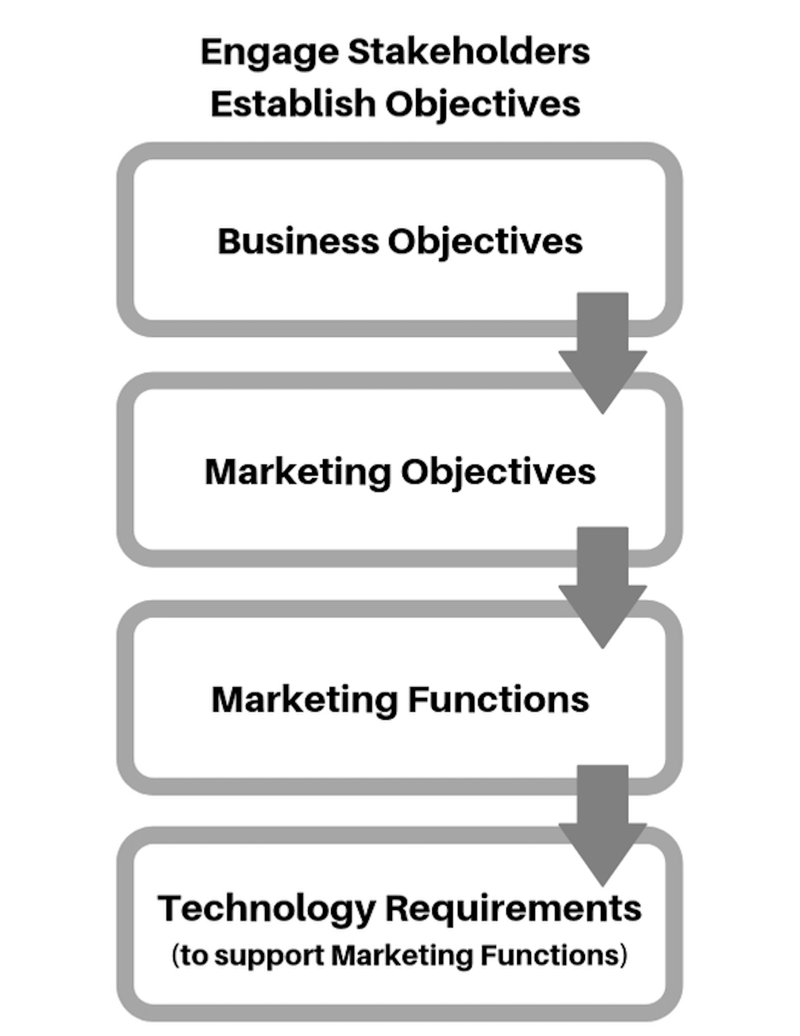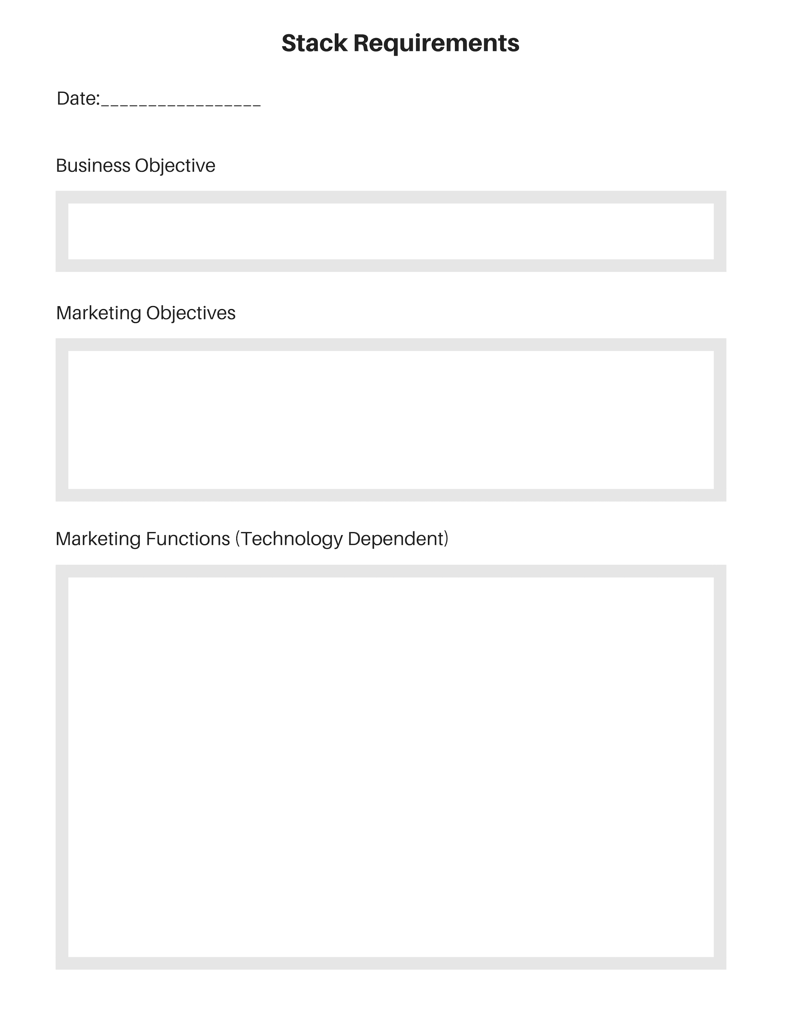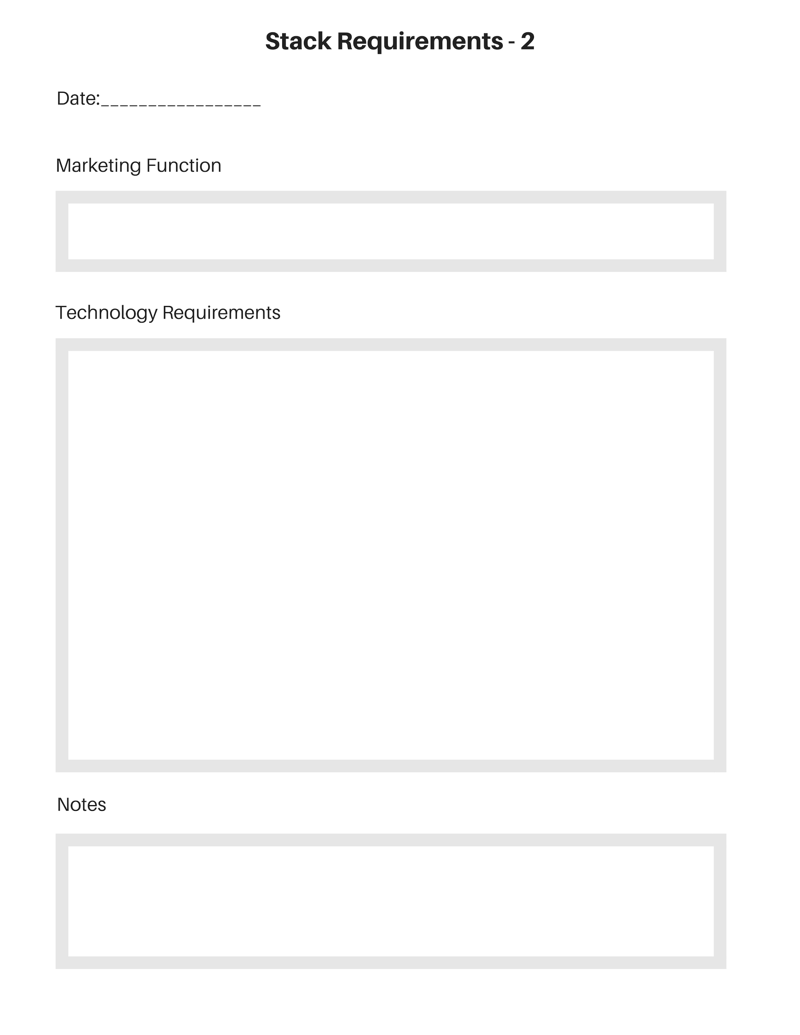It isn’t unusual for organizations, in response to internal pressure, to jump right to “we need an XYZ platform” instead of taking the time to establish marketing objectives and technology requirements. Unfortunately, skipping this step generally leads to a bloated technology stack with overlapping functionality, poor utilization of the platforms in place, and increased cost.
As you begin to think about your stack strategy and plan, start by identifying the business and marketing objectives you are trying to achieve, and then define and map the marketing functions that will need to be supported by technology for each objective.
A Simplistic Example:
Business objective: Increase Customer Lifetime Value (CLTV)
Customer Lifetime Value is the profit contribution that each customer provides over the time that they are purchasing from your business. Some of the ways that Customer Lifetime Value can be increased are:
Marketing objective: Increase purchase frequency
As noted above, increasing purchasing frequency is one way to achieve the goal of increasing CLTV. There are many programs that can be leveraged to increase the frequency of repeat purchases including:
Marketing function (technology-driven): Loyalty program
Technology required to launch a loyalty program. Technology is needed to:
With your marketing functions defined, and high-level technology requirements defined, you have a framework that can be used to match existing tools to marketing objectives and help identify tool requirements and the teams responsible for evaluating tool options.
Generating an objective-driven technology requirements framework adds value throughout the many stages of auditing, building, and maintaining a marketing technology stack. Having a framework makes it easier to identify which existing tools support current objectives and to pinpoint functions and requirements that are not currently supported. Following this methodology also helps identify redundant platforms as you’ll quickly be able to see where you have multiple platforms supporting the same technology requirement.
With your framework in hand, as you drill down to identify the specific technology requirements needed to serve each business function, it’s important not to jump straight to defining a platform requirement, e.g., “I need a CRM system,” We naturally do this because it feels concrete. If you approach your requirements this way you run the risk of narrowing down your product selection too quickly by biasing you to one type of tool, when in fact a different type of tool may be able to deliver more functionality. Make sure that you collect a complete set of requirements and only then, identify the various types of platforms that could address those requirements.
For the most part, the objective setting exercise is the same in a standalone company and a newly merged company. However, it may potentially differ if the plan is for the acquired company to operate independently which can sometimes be the case when there isn’t close synergy between product lines or the customer demographic is different. In these environments, the objective setting process should happen for each entity in parallel, with information shared between organizations at the end of the exercise. Even if stacks are not going to be fully integrated, there may be overlapping objectives and requirements that can be served by a shared platform purchase or by negotiating preferred pricing for two separate platforms.
Two important things to consider as you continue to build-out your technology requirements framework:
Having a well-defined requirements framework will make it much easier to assess your existing marketing technology stack and to determine what else is needed to complete it. As tempting as it might be, don’t skip this vital planning step.


